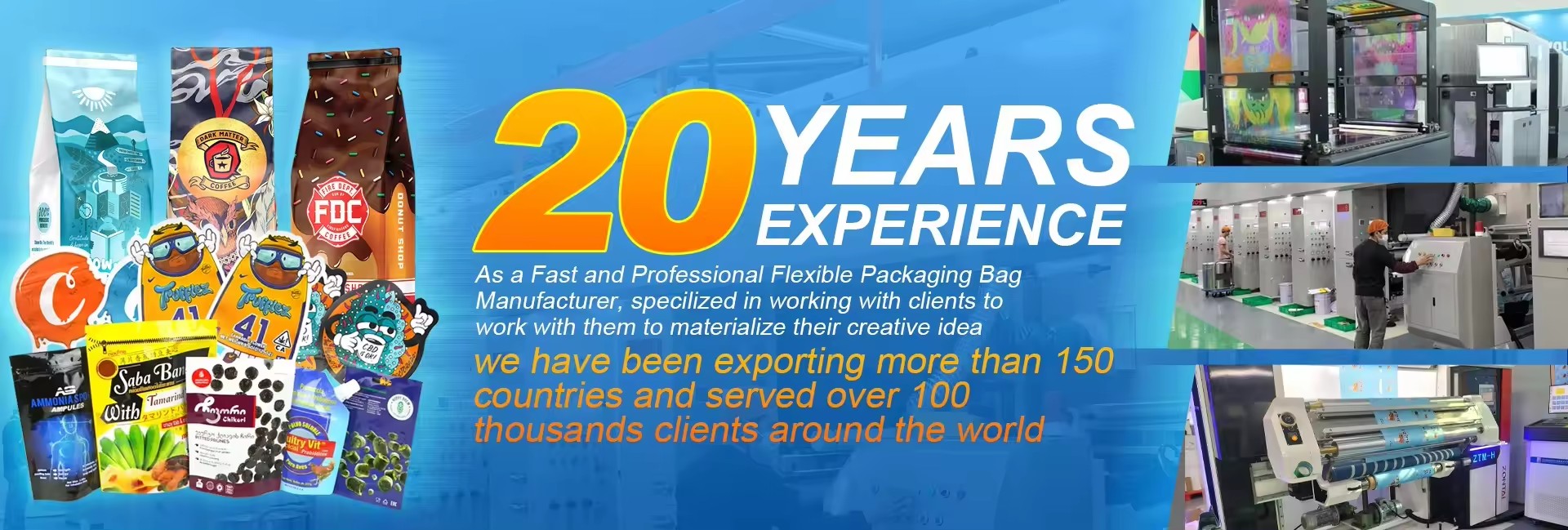


Food packaging bags are generally divided into: ordinary food packaging bags, vacuum food packaging bags, inflatable food packaging bags, boiled food packaging bags, steamed food packaging bags, and functional food packaging bags.
There are also many types of materials for food packaging bags: PE bags, aluminum foil bags, composite bags, nylon bags are quite common.
Vacuum bags are used to extract and seal all the air inside the packaging, maintaining a highly depressurized state inside the bag. The scarcity of air is equivalent to a low oxygen effect, making it impossible for microorganisms to survive, in order to achieve the goal of fresh food and no occurrence of disease and decay.
Food aluminum foil bag is a product made by dry compounding aluminum with other high barrier materials based on the unique properties of aluminum. Aluminum foil bags have good functions of moisture resistance, barrier, light avoidance, penetration resistance, and beautiful appearance.
Food grade composite bags are moisture-proof, cold resistant, and have strong heat sealing strength at low temperatures; It is mainly used for instant noodles, snacks, frozen Dim sum, powder packaging, etc.
Food grade packaging bags must meet the protection needs of all aspects of food:
1. Food packaging requirements can block water vapor, gases, fats, and organic solvents, etc;
2. According to the special requirements of actual production, add functions such as rust prevention, corrosion prevention, and electromagnetic radiation protection;
3. Ensure food safety and pollution-free while extending food shelf life.
The main and auxiliary materials used in food grade packaging must not contain substances that are harmful to the human body, or the content should be within the range allowed by national standards.
Due to the particularity of food grade packaging, only by strictly adhering to production standards can products be approved and put into the market.
All inner packaging bags that come into contact with food strictly adhere to the production process of food grade packaging bags, which not only ensure safety and hygiene, but also ensure the original taste of delicious food.
Instead of food grade packaging bags, the main difference in material composition lies in the use of additives. If an opening agent is added to the material, it cannot be used for food packaging.
So how do we distinguish whether packaging bags are non food grade or food grade?
When we receive the packaging bag, we first observe that the new material has no odor, a good texture, a uniform texture, and bright colors. Only when all of these are achieved can it be a safe and hygienic food grade environmentally friendly bag.






